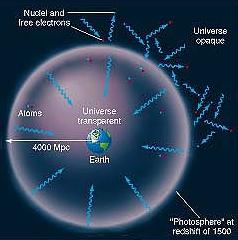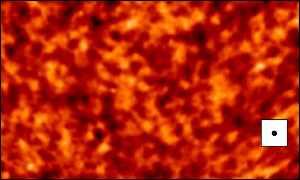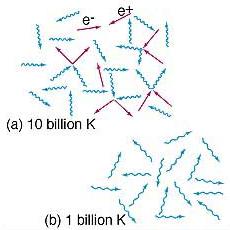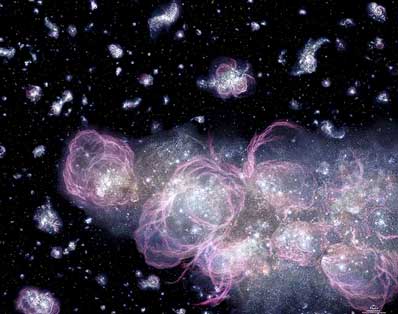 |
The Formation
of Atoms
- Decoupling: The era of nuclei
ends at about 380,000 yr, when neutral atoms form and most of
the matter does not affect photons anymore; matter becomes transparent
to visible light.
- Result/prediction: The light
that was present at the time is still around, although much redshifted,
as microwaves. More energetic photons, like UV, would be absorbed
by atoms, but there were not many of those.
- Do we have evidence? The 3 K
cosmic microwave background, discovered in 1964 by Penzias and
Wilson. The radiation is the same in all directions, except for
a blue/redshift in our direction of motion, and very small fluctuations.
- Structure formation: Matter
can now form the first gas clouds, that will eventually lead
to protogalaxies.
|





![]()